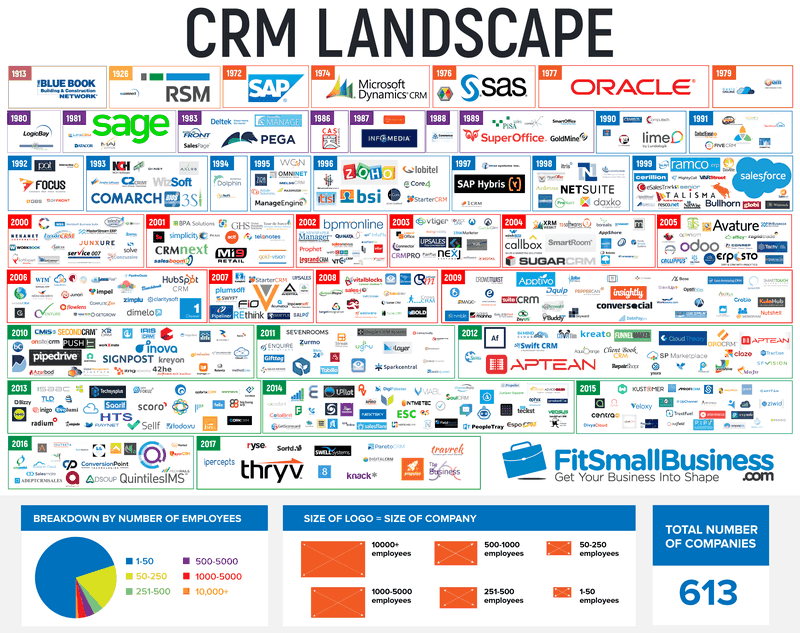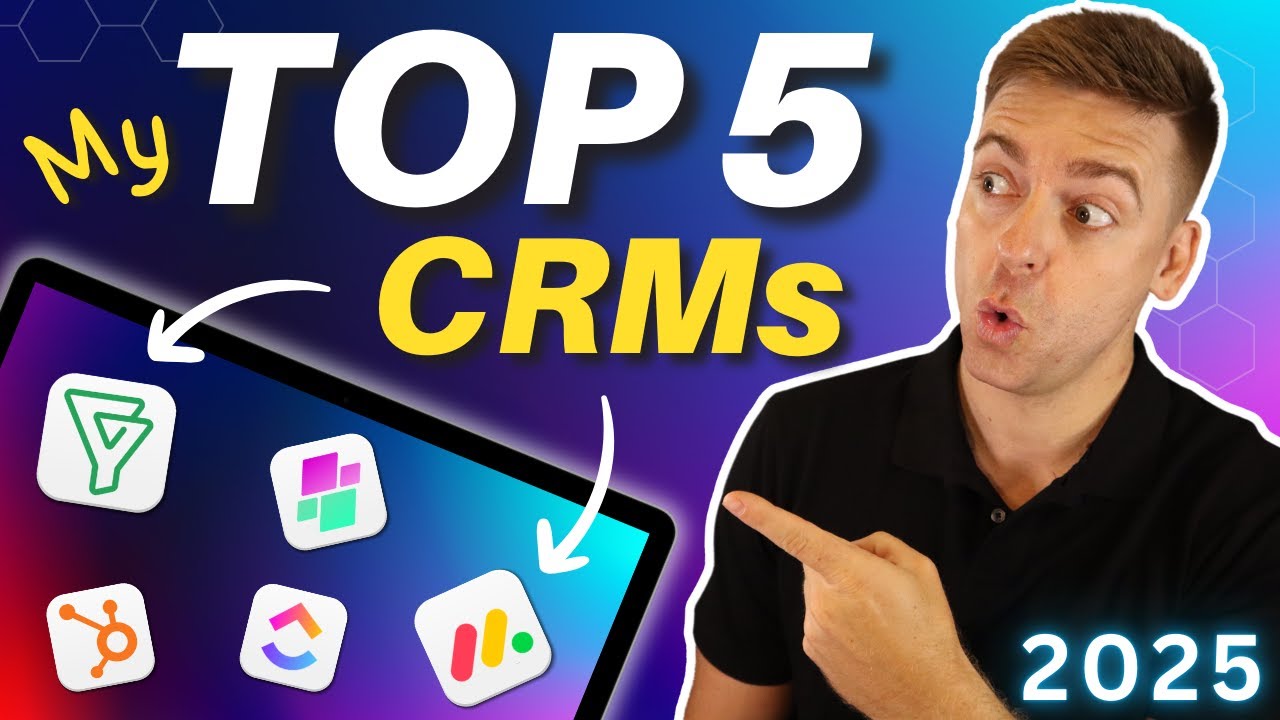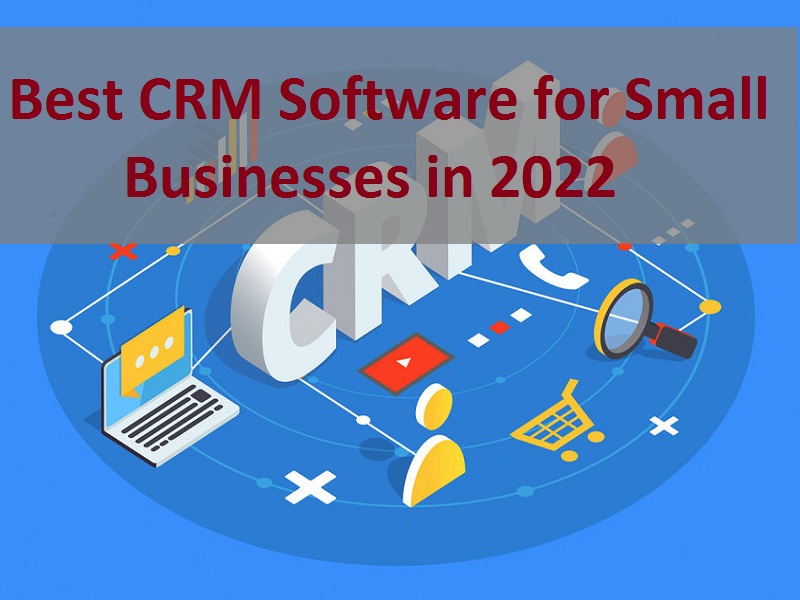
Introduction: Why Your Small Business Needs a CRM (and Why It Doesn’t Have to Be Complicated)
Running a small business is a whirlwind. You’re juggling everything from product development to marketing, sales, and customer service. In the midst of all this, it’s easy for customer relationships to get lost in the shuffle. That’s where a Customer Relationship Management (CRM) system comes in. Think of it as your central hub for all things customer-related.
But here’s the thing: the word “CRM” can conjure images of complex software, hefty price tags, and training manuals the size of a phone book. This doesn’t have to be the case. This guide is all about finding and implementing easy CRM systems for small businesses. We’ll explore why a CRM is essential, what features to look for, and how to choose the right one without getting overwhelmed. We’ll also discuss the benefits of using a CRM, the top CRM options available, and practical tips for implementation.
The goal? To empower you to build stronger customer relationships, streamline your sales process, and ultimately, grow your business – all without the headache of complicated software.
The Core Benefits of Using a CRM System
Before diving into specific CRM options, let’s understand why a CRM is so crucial for small businesses. The advantages are numerous, and they all contribute to a more efficient and profitable operation:
1. Improved Customer Relationships
This is the heart of it all. A CRM helps you understand your customers better. It centralizes all customer data – contact information, purchase history, communication logs, and more – in one accessible place. This means you can:
- Personalize interactions: Tailor your communication based on individual customer preferences and past interactions.
- Provide better service: Quickly access customer information to resolve issues and answer questions efficiently.
- Build stronger loyalty: Show your customers that you remember them and value their business.
Think about it: imagine walking into your favorite coffee shop, and the barista knows your name and your usual order. That’s the kind of personal touch a CRM allows you to replicate, even at scale.
2. Streamlined Sales Processes
A CRM can transform your sales pipeline from a chaotic mess to a well-oiled machine. It automates many repetitive tasks, freeing up your sales team to focus on what they do best: closing deals. Key benefits include:
- Lead management: Track leads from initial contact to conversion, ensuring no opportunities slip through the cracks.
- Sales automation: Automate tasks like sending follow-up emails, scheduling appointments, and generating quotes.
- Improved sales forecasting: Gain a clearer picture of your sales pipeline and predict future revenue more accurately.
By automating these tasks, you can significantly reduce the time spent on administrative duties and increase the time spent on building relationships with potential customers.
3. Increased Efficiency and Productivity
Time is money, and a CRM helps you save both. By automating tasks and centralizing information, a CRM allows your team to work smarter, not harder. This translates to:
- Reduced manual data entry: Eliminate the need to manually enter customer information into multiple systems.
- Improved collaboration: Enable your team to share information and collaborate on customer interactions seamlessly.
- Better organization: Keep all your customer-related information organized and easily accessible.
Imagine the time savings if your sales team no longer had to manually enter contact information or search through multiple spreadsheets to find customer data. This efficiency boost can have a significant positive impact on your bottom line.
4. Data-Driven Decision Making
A CRM provides valuable insights into your customers and your sales performance. By analyzing the data stored in your CRM, you can make more informed decisions about your business. This includes:
- Identifying customer trends: Understand what your customers are buying, what they’re interested in, and how they’re interacting with your business.
- Measuring sales performance: Track key metrics like conversion rates, average deal size, and sales cycle length.
- Optimizing marketing campaigns: Determine which marketing efforts are most effective in attracting and converting customers.
Data is the new gold. A CRM helps you mine that gold and use it to make smarter business decisions.
Key Features to Look for in an Easy CRM System
Now that you understand the benefits, let’s look at the essential features to consider when choosing an easy CRM for your small business. The best CRM systems are user-friendly, intuitive, and offer the core functionalities you need without overwhelming you with unnecessary complexity.
1. Contact Management
This is the foundation of any CRM. It allows you to store and manage all your customer contact information, including names, email addresses, phone numbers, and other relevant details. Look for features like:
- Easy data entry: The ability to quickly and easily add new contacts.
- Contact segmentation: The ability to group contacts based on various criteria (e.g., location, industry, purchase history).
- Import/export capabilities: The ability to import and export contact data from other sources (e.g., spreadsheets, email clients).
2. Sales Pipeline Management
This feature helps you visualize and manage your sales process. It allows you to track leads through each stage of the sales pipeline, from initial contact to closing the deal. Key features include:
- Deal tracking: The ability to create and track deals, including their value, status, and expected close date.
- Task management: The ability to assign tasks to team members and track their progress.
- Reporting and analytics: The ability to generate reports on sales performance and identify areas for improvement.
3. Email Integration
Seamless email integration is crucial for efficient communication. Look for a CRM that integrates with your existing email provider (e.g., Gmail, Outlook) and allows you to:
- Send and receive emails directly from the CRM.
- Track email opens and clicks.
- Automate email follow-ups.
4. Automation
Automation is a key time-saver. Look for a CRM that offers automation features to streamline repetitive tasks, such as:
- Email automation: Automatically send welcome emails, follow-up emails, and other pre-written messages.
- Task automation: Automatically create tasks for your team members based on specific triggers.
- Workflow automation: Automate complex processes, such as lead nurturing and sales pipeline management.
5. Reporting and Analytics
Data is your friend. Reporting and analytics features allow you to track your sales performance, identify trends, and make data-driven decisions. Look for a CRM that offers:
- Customizable dashboards: View key metrics at a glance.
- Pre-built reports: Access reports on sales, marketing, and customer service performance.
- Data visualization: Easily understand your data through charts and graphs.
6. Mobile Accessibility
In today’s fast-paced world, mobile accessibility is a must-have. Choose a CRM that offers a mobile app or a responsive web design, allowing you to access your customer data and manage your sales pipeline from anywhere.
7. Integrations
A CRM should integrate with other tools you use, such as:
- Email marketing platforms: (e.g., Mailchimp, Constant Contact)
- Accounting software: (e.g., QuickBooks, Xero)
- Social media platforms: (e.g., Facebook, Twitter)
This will streamline your workflow and eliminate the need to manually transfer data between different systems.
8. User-Friendliness and Ease of Use
This is perhaps the most important factor. Look for a CRM that is intuitive, easy to navigate, and has a clean and uncluttered interface. If it’s too complicated, your team won’t use it.
Top Easy CRM Systems for Small Businesses: A Quick Comparison
Now, let’s explore some of the best easy CRM systems available. These are all designed with small businesses in mind, offering a balance of features, affordability, and user-friendliness.
1. HubSpot CRM
HubSpot CRM is a popular choice, and for good reason. It offers a free version that includes a generous set of features, making it an excellent option for businesses just starting out. It’s known for its:
- User-friendly interface: Easy to navigate and use.
- Comprehensive features: Offers contact management, sales pipeline management, email integration, and more.
- Excellent free plan: Provides a robust set of features for free.
- Strong integrations: Integrates with a wide range of other tools.
HubSpot also offers paid plans with more advanced features, but the free version is often sufficient for small businesses.
2. Freshsales
Freshsales is another strong contender, particularly for businesses focused on sales. It’s known for its:
- Sales-focused features: Strong lead management, sales automation, and reporting capabilities.
- Affordable pricing: Offers a range of plans to suit different budgets.
- Intuitive interface: Easy to learn and use.
- Built-in phone and email: Offers integrated communication tools.
Freshsales is a great option if you’re looking for a CRM that can help you close more deals.
3. Zoho CRM
Zoho CRM is a versatile and feature-rich CRM that offers a wide range of tools for sales, marketing, and customer service. It’s known for its:
- Customization options: Highly customizable to meet your specific needs.
- Scalability: Can grow with your business.
- Affordable pricing: Offers a range of plans to suit different budgets.
- Wide range of integrations: Integrates with a vast array of other tools.
Zoho CRM is a good choice if you need a CRM that can handle a variety of business processes.
4. Pipedrive
Pipedrive is a sales-focused CRM that’s designed to help you manage your sales pipeline efficiently. It’s known for its:
- Visual sales pipeline: Easy to visualize and manage your sales process.
- Focus on sales: Designed specifically for sales teams.
- User-friendly interface: Clean and intuitive design.
- Automated features: Automates many repetitive tasks.
Pipedrive is a great option if you want a CRM that simplifies your sales process.
5. Agile CRM
Agile CRM is a comprehensive CRM that offers features for sales, marketing, and customer service. It’s known for its:
- All-in-one platform: Combines CRM, marketing automation, and customer service features.
- Affordable pricing: Offers a range of plans to suit different budgets.
- User-friendly interface: Easy to learn and use.
- Good customer support: Provides responsive customer support.
Agile CRM is a good choice if you’re looking for an all-in-one solution.
How to Choose the Right Easy CRM for Your Small Business
Choosing the right CRM can feel overwhelming, but by following these steps, you can make an informed decision:
1. Define Your Needs
Before you start looking at CRM systems, take some time to identify your specific needs and goals. Ask yourself:
- What are your key business objectives? (e.g., increase sales, improve customer satisfaction)
- What are your biggest pain points in managing customer relationships?
- What features are essential for your business? (e.g., contact management, sales pipeline management, email integration)
- What is your budget?
Knowing your needs will help you narrow down your options and choose a CRM that’s a good fit for your business.
2. Research and Compare Options
Once you know your needs, start researching different CRM systems. Read reviews, compare features, and consider pricing. Take advantage of free trials to test out different systems and see which one you like best. When researching, consider:
- Ease of use: How easy is the system to learn and use?
- Features: Does it offer the features you need?
- Pricing: Is it affordable for your budget?
- Integrations: Does it integrate with other tools you use?
- Customer support: What kind of customer support is available?
3. Consider Your Team’s Needs
Your team will be using the CRM, so it’s important to consider their needs. Get their input on which features are most important to them and which systems they find easiest to use. Make sure the CRM is intuitive and easy to use so your team will actually embrace it.
4. Start with a Free Trial or a Basic Plan
Don’t commit to a long-term contract right away. Start with a free trial or a basic plan to test out the system and see if it’s a good fit for your business. This will allow you to get familiar with the system and see if it meets your needs before making a financial commitment.
5. Prioritize User-Friendliness
Ultimately, the best CRM is the one your team will actually use. Choose a system that is user-friendly, intuitive, and easy to navigate. If it’s too complicated, your team won’t use it, and you won’t get the full benefit of the CRM.
Implementing Your Easy CRM System: A Step-by-Step Guide
Once you’ve chosen your CRM, it’s time to implement it. Here’s a step-by-step guide to help you get started:
1. Plan Your Implementation
Before you start, create a plan for your CRM implementation. This should include:
- Defining your goals: What do you want to achieve with your CRM?
- Identifying your data sources: Where will you get your customer data?
- Mapping your sales process: How will you use the CRM to manage your sales pipeline?
- Assigning roles and responsibilities: Who will be responsible for managing the CRM?
A well-defined plan will help you avoid confusion and ensure a smooth implementation.
2. Import Your Data
The next step is to import your existing customer data into the CRM. This may involve importing data from spreadsheets, email clients, or other sources. Make sure your data is clean and accurate before importing it. This is crucial because the CRM is only as good as the data within it.
3. Customize Your CRM
Most CRM systems allow you to customize them to fit your specific needs. This may include:
- Adding custom fields: Add fields to store information specific to your business.
- Creating custom reports: Generate reports that provide the insights you need.
- Setting up workflows: Automate repetitive tasks.
Take the time to customize your CRM to maximize its value.
4. Train Your Team
Provide your team with adequate training on how to use the CRM. This should include:
- Explaining the benefits of the CRM.
- Demonstrating how to use the key features.
- Providing hands-on practice.
Proper training is essential for ensuring that your team uses the CRM effectively.
5. Integrate with Other Tools
Integrate your CRM with other tools you use, such as email marketing platforms, accounting software, and social media platforms. This will streamline your workflow and eliminate the need to manually transfer data between different systems.
6. Monitor and Optimize
Once your CRM is up and running, monitor its performance and make adjustments as needed. This may involve:
- Tracking key metrics: Monitor your sales performance, customer satisfaction, and other key metrics.
- Identifying areas for improvement: Identify areas where you can improve your use of the CRM.
- Making adjustments: Make adjustments to your CRM configuration or processes as needed.
Continuous monitoring and optimization will ensure that you get the most out of your CRM.
Common Mistakes to Avoid When Implementing a CRM
Implementing a CRM can be a game-changer for your small business, but it’s easy to make mistakes that can hinder its success. Here are some common pitfalls to avoid:
1. Not Defining Your Goals
Without clear goals, you won’t know what you want to achieve with your CRM, making it difficult to choose the right system and measure its success. Before you start, define your objectives, such as increasing sales, improving customer satisfaction, or streamlining your sales process.
2. Choosing a CRM That’s Too Complex
While advanced features can be tempting, a complex CRM can overwhelm your team and lead to low adoption rates. Start with a user-friendly system that offers the core features you need and gradually add more advanced features as your business grows.
3. Not Training Your Team Properly
If your team doesn’t know how to use the CRM, they won’t use it effectively, and you won’t realize the benefits. Invest in thorough training and provide ongoing support to ensure that everyone understands how to use the system and can access its full potential.
4. Not Cleaning Up Your Data
A CRM is only as good as the data it contains. If your data is inaccurate, incomplete, or outdated, it will be difficult to make informed decisions. Before importing your data, clean it up by removing duplicates, correcting errors, and updating outdated information.
5. Not Integrating with Other Tools
Failing to integrate your CRM with other tools, such as your email marketing platform, accounting software, and social media platforms, can create data silos and increase manual work. Integrate your CRM with your other tools to streamline your workflow and improve efficiency.
6. Not Monitoring and Optimizing
Implementing a CRM is not a one-time task. You need to continuously monitor its performance, track key metrics, and make adjustments as needed. Regularly review your CRM configuration, processes, and reports to identify areas for improvement and ensure that you’re getting the most out of your investment.
7. Trying to Do Too Much Too Soon
Don’t try to implement every feature of your CRM at once. Start with the core features and gradually add more advanced features as your team becomes more comfortable with the system. This will help you avoid overwhelm and ensure a smoother implementation process.
Conclusion: Embrace the Power of Easy CRM for Small Business Success
In the fast-paced world of small business, staying organized and connected with your customers is paramount. An easy-to-use CRM system is no longer a luxury; it’s a necessity. By choosing the right CRM, implementing it effectively, and avoiding common mistakes, you can unlock the power of customer relationship management and drive significant growth.
Remember, the best CRM is the one that fits your specific needs and that your team will actually use. Don’t be afraid to experiment, try out different options, and find the perfect fit for your small business. With the right CRM in place, you can build stronger customer relationships, streamline your sales process, and achieve lasting success.
So, take the leap. Explore the world of easy CRM systems, and watch your small business thrive.

